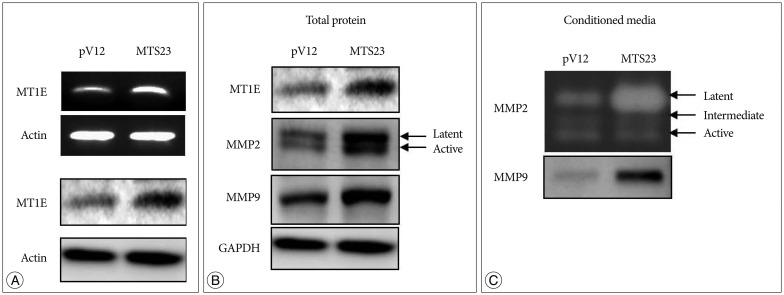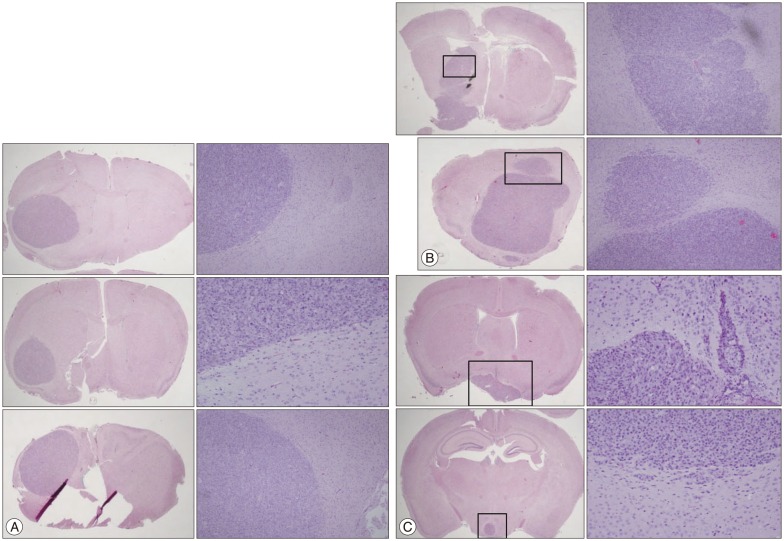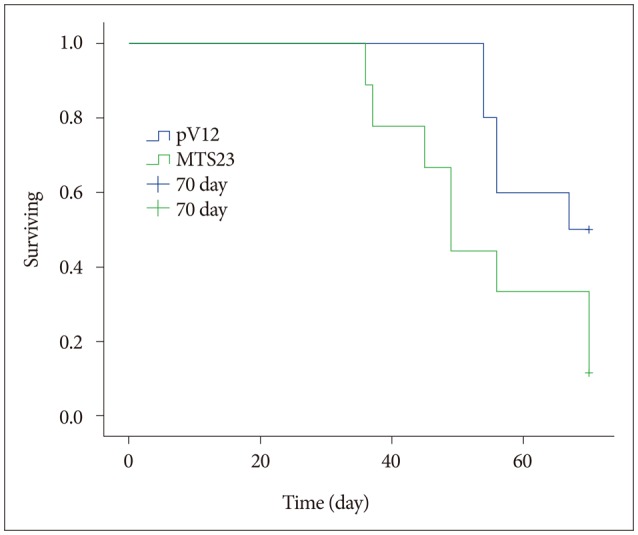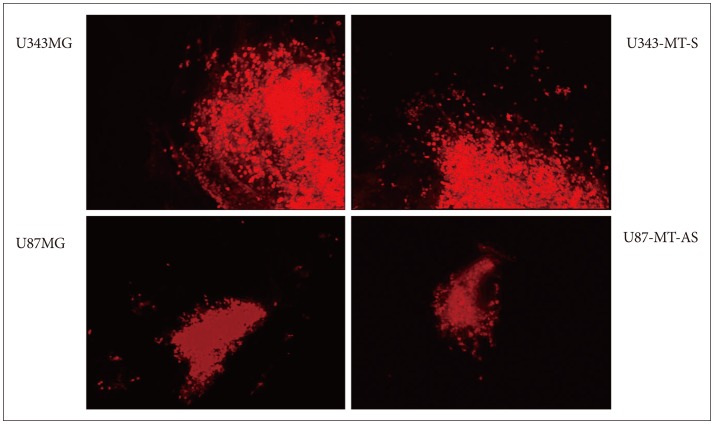1. Agrawal A, Romero-Perez D, Jacobsen JA, Villarreal FJ, Cohen SM. Zinc-binding groups modulate selective inhibition of MMPs. ChemMedChem. 2008; 3:812–820. PMID:
18181119.

2. Andela VB, Gordon AH, Zotalis G, Rosier RN, Goater JJ, Lewis GD, et al. NFkappaB : a pivotal transcription factor in prostate cancer metastasis to bone. Clin Orthop Relat Res. 2003; (415 Suppl):S75–S85. PMID:
14600595.
3. Arriaga JM, Levy EM, Bravo AI, Bayo SM, Amat M, Aris M, et al. Metallothionein expression in colorectal cancer : relevance of different isoforms for tumor progression and patient survival. Hum Pathol. 2012; 43:197–208. PMID:
21820154.

4. Chen X, Chen L, Chen J, Hu W, Gao H, Xie B, et al. ADAM17 promotes U87 glioblastoma stem cell migration and invasion. Brain Res. 2013; 1538:151–158. PMID:
23470260.

5. Escárcega RO, Fuentes-Alexandro S, García-Carrasco M, Gatica A, Zamora A. The transcription factor nuclear factor-kappa B and cancer. Clin Oncol(R Coll Radiol). 2007; 19:154–161. PMID:
17355113.

6. Giricz O, Calvo V, Peterson EA, Abouzeid CM, Kenny PA. TACE-dependent TGFα shedding drives triple-negative breast cancer cell invasion. Int J Cancer. 2013; 133:2587–2595. PMID:
23729230.

7. Hiura T, Khalid H, Yamashita H, Tokunaga Y, Yasunaga A, Shibata S. Immunohistochemical analysis of metallothionein in astrocytic tumors in relation to tumor grade, proliferative potential, and survival. Cancer. 1998; 83:2361–2369. PMID:
9840536.

8. Huang ST, Yang RC, Wu HT, Wang CN, Pang JH. Zinc-chelation contributes to the anti-angiogenic effect of ellagic acid on inhibiting MMP-2 activity, cell migration and tube formation. PLoS One. 2011; 6:e18986. PMID:
21573219.

9. Jin R, Bay BH, Chow VT, Tan PH. Metallothionein 1F mRNA expression correlates with histological grade in breast carcinoma. Breast Cancer Res Treat. 2001; 66:265–272. PMID:
11510698.

10. Jung S, Ackerley C, Ivanchuk S, Mondal S, Becker LE, Rutka JT. Tracking the invasiveness of human astrocytoma cells by using green fluorescent protein in an organotypical brain slice model. J Neurosurg. 2001; 94:80–89. PMID:
11147903.

11. Jung S, Hinek A, Tsugu A, Hubbard SL, Ackerley C, Becker LE, et al. Astrocytoma cell interaction with elastin substrates : implications for astrocytoma invasive potential. Glia. 1999; 25:179–189. PMID:
9890632.

12. Jung TY, Jung S, Ryu HH, Jeong YI, Jin YH, Jin SG, et al. Role of galectin-1 in migration and invasion of human glioblastoma multiforme cell lines. J Neurosurg. 2008; 109:273–284. PMID:
18671640.

13. Karin M, Cao Y, Greten FR, Li ZW. NF-kappaB in cancer : from innocent bystander to major culprit. Nat Rev Cancer. 2002; 2:301–310. PMID:
12001991.

14. Kim JE, Paek SH, Kim DG, Chung HT, Kim YY, Jung HW. The combined effect of gamma knife irradiation and p53 gene transfection in human malignant glioma cell lines. J Korean Neurosurg Soc. 2005; 37:48–53.
15. Kim YS, Jeong YI, Jin SG, Pei J, Wen M, Kim IY, et al. Release of tissue inhibitor of metalloproteinase-2 from alginate microcapsule encapsulating genetically engineered cells. Int J Nanomedicine. 2013; 8:4351–4359. PMID:
24231999.
16. Lokeshwar BL, Selzer MG, Block NL, Gunja-Smith Z. Secretion of matrix metalloproteinases and their inhibitors (tissue inhibitor of metalloproteinases) by human prostate in explant cultures: reduced tissue inhibitor of metalloproteinase secretion by malignant tissues. Cancer Res. 1993; 53:4493–4498. PMID:
7691397.
17. Lv X, Li Y, Qian M, Ma C, Jing H, Wen Z, et al. ADAM17 silencing suppresses the migration and invasion of non-small cell lung cancer. Mol Med Rep. 2014; 9:1935–1940. PMID:
24626788.

18. Maret W, Jacob C, Vallee BL, Fischer EH. Inhibitory sites in enzymes : zinc removal and reactivation by thionein. Proc Natl Acad Sci U S A. 1999; 96:1936–1940. PMID:
10051573.
19. Nagase H, Visse R, Murphy G. Structure and function of matrix metalloproteinases and TIMPs. Cardiovasc Res. 2006; 69:562–573. PMID:
16405877.

20. Nakajima M, Chop AM. Tumor invasion and extracellular matrix degradative enzymes : regulation of activity by organ factors. Semin Cancer Biol. 1991; 2:115–127. PMID:
1655116.
21. Oeckinghaus A, Hayden MS, Ghosh S. Crosstalk in NF-κB signaling pathways. Nat Immunol. 2011; 12:695–708. PMID:
21772278.

22. Parks WC, Wilson CL, López-Boado YS. Matrix metalloproteinases as modulators of inflammation and innate immunity. Nat Rev Immunol. 2004; 4:617–629. PMID:
15286728.

23. Roesijadi G. Metal transfer as a mechanism for metallothionein-mediated metal detoxification. Cell Mol Biol (Noisy-le-grand). 2000; 46:393–405. PMID:
10774928.
24. Ryu HH, Jung S, Jung TY, Moon KS, Kim IY, Jeong YI, et al. Role of metallothionein 1E in the migration and invasion of human glioma cell lines. Int J Oncol. 2012; 41:1305–1313. PMID:
22843066.

25. Satoh M, Cherian MG, Imura N, Shimizu H. Modulation of resistance to anticancer drugs by inhibition of metallothionein synthesis. Cancer Res. 1994; 54:5255–5257. PMID:
7923149.
26. Werynska B, Pula B, Muszczynska-Bernhard B, Piotrowska A, Jethon A, Podhorska-Okolow M, et al. Correlation between expression of metallothionein and expression of Ki-67 and MCM-2 proliferation markers in non-small cell lung cancer. Anticancer Res. 2011; 31:2833–2839. PMID:
21868526.









 PDF
PDF ePub
ePub Citation
Citation Print
Print



 XML Download
XML Download